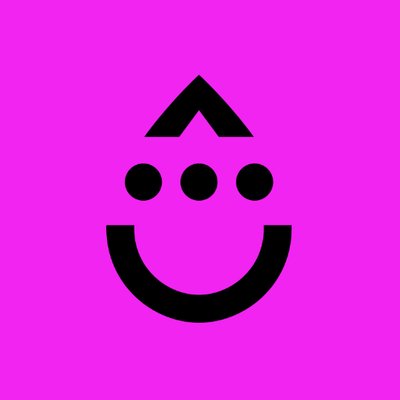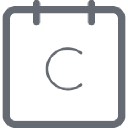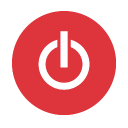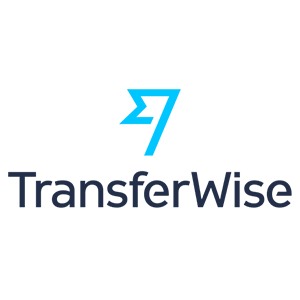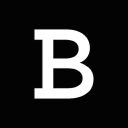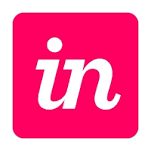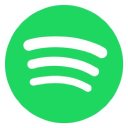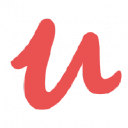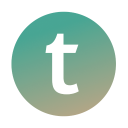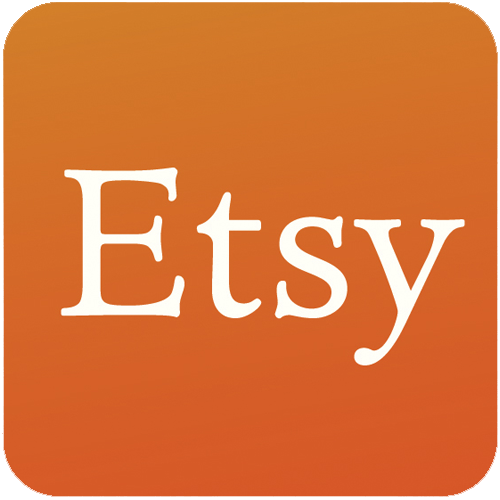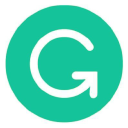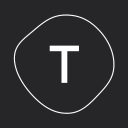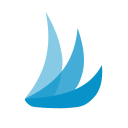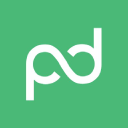
How I Created A $4K/Month Digital Planner
Hello! Who are you and what business did you start?
I’m Ralu Petrea, the founder (and UX Designer) at Outline Planner, the paperless planner that took me one week to launch and two years to refine. I started this project as a test, with a €499 initial investment, and it paid off since my first week. It is my full-time job two years later, and I am now open to growing my team.
I always make plans that work for me, yet I don't know how to teach people how to make plans. So, I created a tool that they can plug in and play with on their iPads. I embedded my mind into this instrument to make actionable plans in a more logical and organized way.
Before moving forward, I should mention what paperless planners (aka digital planners) are. Literally, they’re JUST like physical paper planners that live on your tablet. Picture an easy to carry notebook that has all your life inside; that feels like writing on paper, yet it allows you to add endless space for notes, arrange pages, correct mistakes, add images, and move your handwriting all over the place effortlessly. That's a digital planner.
Technically, a digital planner is a PDF template (with or without hyperlinks) that only works inside a markup app. See it as a premium plugin that builds additional functionality into existing note-taking apps. I use my digital planner with an iPad and Apple Pencil, inside the Noteshelf note-taking app, and I found this to be the best match so far.
I know there are MANY tablets on the market, but nothing matches the experience you have on an iPad compatible with an apple pencil. So, although my products are used by both iOS and Android users, they are promoted explicitly as iPad digital planners.
My flagship product is the WINNERS Outline Planner, an all-in-one monthly, weekly, and daily digital planner for iPad, ready to be plugged in Goodnotes 5, Noteshelf Notability apps. This life-work paperless planner works like a funnel that helps connect the big picture with daily tasks.

What is curious is that in the beginning, I did not know my customer. Only very late in the project, I learned that entrepreneurs, CEO, school principals, doctors, cake artists, working moms, health bloggers, and trendy grandparents use my digital planners to stay sane every day. Most of these people are both male and female from the US, Germany, UK, and Australia.

I launched the first planner in November 2018 on Etsy, as a test, with a €499 investment (for my iPad and the Apple Pencil) with no followers, no business plan, and a brand name borrowed from my previous business that failed. From November 2018 until October 2020, I sold my planners exclusively through my Etsy shop and reached €80K+ in sales, with profit margins around 70% (mostly depending on ad-spend). In 2 years, I got 4K+ orders (15-20% are returning customers) with an avg. customer value of €58.36, and all that while working on my UX design service business.

What's your backstory and how did you come up with the idea?
The Outline Planner is not the first project I unfolded; it is also not the first planner I created, nor the first hobby transformed into a real money-maker job.
In 2011, I created my own digital design business (out of a hobby) and learned my way into becoming a UX designer. Most of my projects these days are apps and tools for Environmental Agencies or European Cybersecurity Agencies. However, not everything went as planned. So, in the process, I co-founded a car-service on wheels in Minneapolis, Minnesota, that took two years to design to perfection, only to die in less than six months due to a lack of money and customer love.
I also created a leather-bound paper planner product that only survived for two years due to a lack of clients and sales. Building this paper planner was my soul project, but I knew that I needed to completely rethink it to survive on the market. I had to do it digitally, yet I had no budget to hire a developing team to build a planning app.
My journey changed entirely one morning when I was casually surfing on Etsy and found (and bought) my first digital planner. I was shocked to learn that the digital planner is just a PDF file with hyperlinks that works inside an annotations app (I used Goodnotes 4 at that moment); I also loved that it looks like a paper planner just on a tablet.
That was my AHA moment when I told myself: “I CAN DO this too! And I can do it better!”. The next day, I spent €499 to buy my first iPad with a compatible Apple Pencil. I was committed to starting designing my new digital product but promised myself that I would return the iPad in 30 days if I did not sell any planner. One week later, I published my first weekly digital planner and sold two copies on the first day. In just two weeks, I sold a bit over €499, so I got to keep my iPad!! From that moment, I was all in!

Take us through the process of designing, prototyping, and manufacturing your first product.
With a background in architecture and with 7-year of experience in UX design, I had the right tools to get started. But what made it count was SETTING UP MY INTENTION: I had to launch a basic planner in a week and build it from there together with the people who use it.
Again, I did not invent this concept; I was merely entering a market that already existed. I just had to do it better, using my design skills and loading my planning-driven brain into the tool. From the start, my focus was to create an easy to use a digital planner that enables people to write step-by-step plans to stay sane and simplify their life.

I spent the first three days researching the existing digital planners and learning how to do mine better. Using Adobe InDesign and Adobe Acrobat Pro, I built a 540 pages pixel perfect weekly planner with 13,421 smoothly working hyperlinks for intuitive navigation. Combined with an exclusive 90% OFF launch price, it worked like a charm. People started sending me feedback. I got a lot of requests for improvements; I learned about people's needs, and frustrations. Here are few initial reviews that boost my early days:


Looking back, I can see that spending less time on the tech part and most of my time getting out there, virtually talking with people, and creating the community, although uncomfortable, was the right thing to do.
Immediately after the launch, I was constantly updating the digital planner. I was manically testing the planner's layouts, logical features to include, colors to use, the best location for buttons. I spent a crazy amount of time testing for the perfect page sizes that could fit well on all iPad screens, and that would also work well on note-taking apps available on the market (Goodnotes 5, Noteshelf, and Notability). With so many variables in place, designing, testing, and improving was a real pain, but I managed to find the winner template.
In the first six months, I published more than 30 updated versions of my digital planner and ended up creating 60% of the Outline Planner structure that I use today. After that, I only updated the planner once every 2-3 months, while today, I am collecting feedback and only do the updates on the following year's planner. Today the Outline Planner is a 1511-page PDF planner with 53,726 hyperlinks for even better navigation.

The good part was that I had no substantial starting costs apart from the €499 to buy my iPad and Apple pencil and the $5-10 a day I spent on Etsy Ads. However, the workload was overwhelming for a one-person business. With so many messages and real-time updates, the first six months' stress level was very high. On top of that, I was pregnant and ended up losing the baby five months later.
Describe the process of launching the business.
I launched my first version of the planner, a weekly digital planner with a Monday start calendar and no daily pages, exclusively on Etsy on November 15th, 2018. I sold the first two copies the same day. By the end of the year, I reached 132 orders on my Etsy shop, followed by even more sales in January.

However, since the competition on Etsy was considerable even at that time, I decided to launch the planner with a special discount. The idea was to have at least 50 testers to use and give feedback on the planner. Yet, I did not want to give the product away for FREE, since people tend to ignore things they get for free. Therefore, the very first 50 buyers got the planner super cheap but helped me with tons of feedback in return.
Plus, a good percentage of the people who bought my initial planner returned every year for more digital goodies. So, even though their initial order was 5 euros, they came back every year for the new planner (priced at €49).
Even though I am a Brand Consultant and UX designer, I decided not to spend any time branding my new digital planner or building my website. Instead, I launched it using the same name and website of my previous paper planner business. In the first year, the website was really miserable and neglected because I focused only on growing my Etsy channel and improving the product.

Launching my planner exclusively on Etsy has worked for me since day one. There is a large pool of planner fans on Etsy who already know about this type of product! So I didn’t have to educate them about what a digital planner is and how to use it! Plus, Etsy made it all easy! The platform takes care of almost every essential matter to run the digital business – from digital files storage and delivery, payment processing, invoices, client communication, digital VAT, basic stats, and more.
Looking back, I can see that spending less time on the tech part and most of my time getting out there, virtually talking with people, and creating the community, although uncomfortable, was the right thing to do. Another lesson learned was that doing it all alone was a considerable stretch that takes the toll on your health and mind, so you’d better get prepared.
Since launch, what has worked to attract and retain customers?
Since the launch, the top three things that helped me get more clients were: (1) being found by them using Etsy Ads, (2) offering stellar customer service, and (3) delivering a professional product.
Investing in Etsy Ads was essential to bring people to my new and growing shop. In two years, I made $44,560.63 in sales from Etsy Ads while only spending $12,986.35.

Taking the time to answer customers quickly and providing detailed instructions helped boost my business credibility. The customer service made them trust me and give my digital planner a try, while the quality of the product made them come back for more digital goodies. Soon people started talking about my digital planners to friends and colleagues.


When promoting a product, the images can sell or break the business. During the last two years, I tested many product thumbnails that made my planner visible in Etsy Search. I had products that did not sell at all, and when I changed the thumbnails to something cleaner and compelling, they performed better.

In the process, I tested many promotional channels. Still, plenty of them did not get many results. I used Instagram, Pinterest, Facebook while also paying for guest posts on various websites. Yet, I found the best ways to increase my community (and sales) are: growing my newsletter, publishing video tutorials on Youtube, and investing in Facebook Ads.
My type of product is pretty particular, and my niche is tiny. Yet, in the past eight months, I managed to grow my newsletter list to 3000 subscribers, with an open rate of 33,1% and the unsubscribe rate of 1,2%.
My newsletter community is vital for my business since this is the only place where I share better discounts for new digital products. Although offering all sorts of deals was a huge element of my first year’s strategy, I am now only running very few sales throughout the year, with discounts up to 15-20%.

With Facebook Ads, the story is a bit different. After joining Frank Kern’s online course on how to sell products on Facebook, I ran a test using his strategy, and it worked. The plan was to promote a few awareness videos about digital planning since most people don’t even know it exists, then re-target those leads with tutorials and offers. I only applied this strategy for a limited time and managed to reach 140k people and sell around 110 of my planners, although I spent a bit more than planned. However, I can see this strategy's potential and how this can be scaled and make it work in 2021.

During the COVID-19 pandemic, I decided to give people a fresh new brand to look for, to inspire change and optimism for the future. So, in April 2020 I decided to leave the borrowed brand name behind and give my digital planners a house of their own. That’s when my planner became the OUTLINE PLANNER and my new WordPress website came live. It was a smart move because people resonated very well with the change, and the planner’s name was so much easier to remember. When I launched the new website, I also made available a free planner sample, which brought a considerable amount of traffic from Google Search. Once I decided to stop giving away free planner samples, the traffic decreased dramatically.

How are you doing today and what does the future look like?
During the COVID-19 pandemic, I could see some decrease in visits to my Etsy shop, yet the conversion rate increased by 55.4%, while the Revenue increased 43% compared to the same period last year.

In 2020 the marketing expenses increased up to $80 daily budget for a return of $180-220, compared to the same time last year when I spent $40 daily budget for a return of $280-360. Nevertheless, Etsy Ads are still on top of my list when it comes to the best return on investment, and I will continue to run them in 2021 as well.

Meanwhile, I sorted all the techy and confusing stuff that allows me to sell digital goodies on my website the right way. After lots of testing, trying, and failing, I found my mix for selling digital planners on WordPress. I know I could have used Shopify since I was already familiar with it from my previous businesses, but I wanted something to give me the freedom to sell and upsell my products the way I want.
The feedback coming from real customers when building the product is the entire foundation of your business. You get to improve your product, you'll create a community that loves you, you'll become an authority in your niche.
I wanted to create sales funnels and give people the option to buy more than just one product without the feeling that they’re in an online shop. I tried Dropfunnels (an alternative to Clickfunnels), a friendly platform at an affordable price, but my European customers had checkout problems. So, someone pointed me to Paykickstart, and that’s when the magic began. Using sales funnels, I can now up-sell or down-sell extra products that I trust.
Although there’s not much traffic to my website, I still managed to sell €700 worth of products in December 2020, with the avg. customer value increased to €58.36 (from €4.95 in the previous month). And this is all due to the sales funnels built inside the Paykickstart platform.

My plans now focus on website growth as the primary channel to sell digital planners. While my Etsy Shop currently brings 90% of the sales, it’s my goal to have more than 60% of sales through my website by the end of 2022.
My short-term plan is to create better videos (which I am a total mess at) and increase my YouTube channel to 5K subscribers by the end of 2021. I will also be releasing new business notebooks this year and improving my online courses. The long-term plan (and dream) is to create a team to support the project and offer people the best service ever. Hiring is something I am not yet very good at, but I will keep working on it.
Through starting the business, have you learned anything particularly helpful or advantageous?
Ever since I started on my own, back in 2011, my primary intention was to get all in and make clients happy. A purpose I also followed with my Outline Planner, but I see now that it may not have been the best decision. While trying to fit all needs when building the product, I created 34 versions of the same digital planner. Handling 34 planners are not only challenging for the shop, but it’s also EXTREMELY confusing and overwhelming for clients. Today people want to buy a product and have it in less than 1 minute, so spending 5 minutes comparing versions was kind of a deal-breaker for many.

However, the constant communication with my customers was the WINNING decision by far. It brought the Outline Planner to the format it is right now, a framework that fits 38 to 82-year-old individuals, either female or male, mostly from the US, Germany, UK, and Australia.
The second WINNING decision was when I forced myself to go out there and sell an imperfect product before I was even ready to talk about it. Being open to consider all the feedback (good or bad), to design, test, and improve the digital planner over and over again helped me get to the actual framework very quickly, instead of spending years designing.

What platform/tools do you use for your business?
I have been a huge believer that you have to pay to sell. So I paid for many tools until I found this mix:
- Etsy Plus – to sell the planners with ease while not worrying about payments, digital VAT capturing and remittance, and files delivery
- Paykickstart – at a $99 monthly price, it is a real gem when it comes to selling products on a WordPress website while it handles payments, digital VAT capturing, and file delivery flawlessly
- Drip – is my go-to platform when it comes to creating and delivering newsletter campaigns and email broadcasts
- Automate.io – allows for an automated way to capture Etsy customer's emails and send them to drip customers list
- Siteground hosting – a genuinely professional hosting for WordPress website hosting
- Provely app – created by the same team that created Paykickstart, is a must-have social proof when selling digital products
- Site Reviews app – a WordPress plugin to capture people's feedback and display it on a dedicated webpage.
- Grammarly – comes in very handy for a non-native English speaker like myself
What have been the most influential books, podcasts, or other resources?
There is one book that changed my way of connecting with customers, and that is: Getting Naked: A Business Fable About Shedding The Three Fears that Thattage Client Loyalty.
Apart from that, I highly recommend listening to a transparent and honest podcast as the Career Relaunch Podcast by Joseph Liu. I met Joseph during an interview for his podcast when we chatted about my physical planners.
Advice for other entrepreneurs who want to get started or are just starting?
You always hear people saying, “get out of your own way”. As painful as it sounds, this is true. Leaving the ego aside, blindly jumping outside the comfort zone and less over-thinking is one way of doing business that worked for many, including me.
Also, don’t spread yourself too thin. Don't start with too many products or try to grow too many social channels at once. Doing tests is excellent to see what works for you, but only focus on one thing at once.
Design, build, test, repeat. That was the mantra ever since I started the UX Designing journey. It is a long process, so take your time to do it. Trust your intuition when designing your product, but don’t skip the testing step. The feedback coming from real customers when building the product is the entire foundation of your business. You get to improve your product, you'll create a community that loves you, you'll become an authority in your niche.

Are you looking to hire for certain positions right now?
Currently, I am looking to hire a part-time virtual assistant, and I intend to build my team for extra support. Yet, I do not have a clear picture of what to look for at the moment.
Where can we go to learn more?
- Website
- Etsy
- Youtube
- Read more about digital planner
- DOWNLOAD 2021 Digital Planner DEMO
If you have any questions or comments, drop a comment below!

Download the report and join our email newsletter packed with business ideas and money-making opportunities, backed by real-life case studies.

Download the report and join our email newsletter packed with business ideas and money-making opportunities, backed by real-life case studies.

Download the report and join our email newsletter packed with business ideas and money-making opportunities, backed by real-life case studies.

Download the report and join our email newsletter packed with business ideas and money-making opportunities, backed by real-life case studies.

Download the report and join our email newsletter packed with business ideas and money-making opportunities, backed by real-life case studies.

Download the report and join our email newsletter packed with business ideas and money-making opportunities, backed by real-life case studies.

Download the report and join our email newsletter packed with business ideas and money-making opportunities, backed by real-life case studies.

Download the report and join our email newsletter packed with business ideas and money-making opportunities, backed by real-life case studies.

